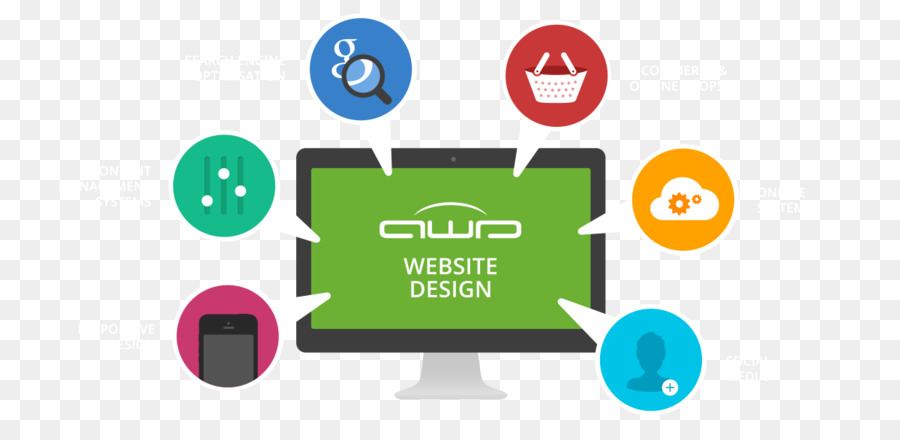Eager To Find Exactly How Web Site Style Has Changed With Time? Dive Into The Development From Simpleness To User-Focused Experiences
Eager To Find Exactly How Web Site Style Has Changed With Time? Dive Into The Development From Simpleness To User-Focused Experiences
Blog Article
Uploaded By-Thorsen Hejlesen
In the past, sites were simple and focused on info. Navigation was direct, and design was for desktop computers. Now, individual experience is essential. Data overviews designs for very easy navigation. Responsive layouts match various devices. Today, dark mode decreases pressure, and minimalist food selections improve navigation. Interactive features involve users, and bold visuals attract attention. AI integration boosts interaction. See just how layout has actually advanced to boost your on-line trip.
Very Early Days of Web Design
In the early days of website design, simplicity preponderated. Sites were fundamental, with minimal shades, fonts, and layouts. The emphasis was on providing details rather than flashy visuals. https://www.google.com/maps/place/Moon+and+Owl+Marketing/@32.9757271,-106.5344695,1840583m/data=!3m1!1e3!4m6!3m5!1s0x864ddeaa4179705b:0x488d41d2cc6b9750!8m2!3d32.9757271!4d-97.5696258!16s%2Fg%2F11b6mpccrg?entry=ttu&g_ep=EgoyMDI1MDIxMS4wIKXMDSoJLDEwMjExNDUzSAFQAw%3D%3D accessed the web through slow dial-up connections, so rate and capability were essential.
Navigating menus were straightforward, typically located on top or side of the web page. Websites were made for computer, as mobile surfing wasn't yet prevalent. Web content was king, and designers focused on easy readability over complex style elements.
HTML was the primary coding language used, and designers had to work within its restrictions. Animations and interactive attributes were marginal compared to today's standards. Websites were static, with little vibrant material or individualized user experiences.
Rise of User-Focused Layout
With the development of web site layout, a change towards user-focused layout principles has actually become significantly noticeable. Today, developing web sites that prioritize user experience is important for involving visitors and accomplishing company objectives. User-focused design includes understanding the needs, preferences, and habits of your target market to tailor the website's format, material, and includes appropriately.
Developers now conduct complete research study, such as user studies and functionality testing, to gather understandings and responses directly from users. This data-driven method aids in producing instinctive navigating, clear calls-to-action, and visually appealing interfaces that resonate with site visitors. By putting the user at the facility of the layout process, sites can deliver a much more individualized and delightful experience.
Receptive layout has actually additionally emerged as a key element of user-focused style, making certain that internet sites are optimized for different tools and display sizes. This versatility enhances availability and usability, catering to the diverse methods customers connect with internet sites today. Basically, the surge of user-focused design indicates a shift towards creating electronic experiences that prioritize the demands and expectations of the end customer.
Modern Trends in Website Design
Check out the latest trends forming web design today. One prominent trend is dark mode design, providing a streamlined and contemporary look while minimizing eye pressure in low-light environments. One more key fad is minimalist navigating, streamlining menus and boosting customer experience by concentrating on essential elements. Integrating click this over here now -interactions, such as animated buttons or scrolling impacts, can produce a much more interesting and interactive internet site. Receptive layout continues to be essential, ensuring smooth user experiences throughout different devices. In addition, using bold typography and unbalanced designs can add visual passion and draw attention to specific material.
Incorporating AI innovation, like chatbots for consumer assistance or personalized recommendations, boosts customer involvement and improves processes. Ease of access has also end up being a considerable trend, with developers focusing on inclusive style techniques to accommodate diverse customer requirements. Accepting sustainability by optimizing web site efficiency for speed and effectiveness is one more arising pattern in website design. Teaming up with customer responses and information analytics to repeat and improve design continuously is important for staying pertinent in the ever-evolving digital landscape. By embracing these contemporary fads, you can produce a visually appealing, easy to use web site that resonates with your audience.
Conclusion
As you reflect on the advancement of site design from the early days to now, you can see just how user-focused design has come to be the driving pressure behind modern patterns.
Welcome the journey of adjustment and adjustment in website design, always maintaining the individual experience at the center.
Stay current with the most recent patterns and modern technologies, and never ever quit advancing your approach to develop visually magnificent and easy to use websites.
Develop, adjust, and create - the future of website design remains in your hands.
